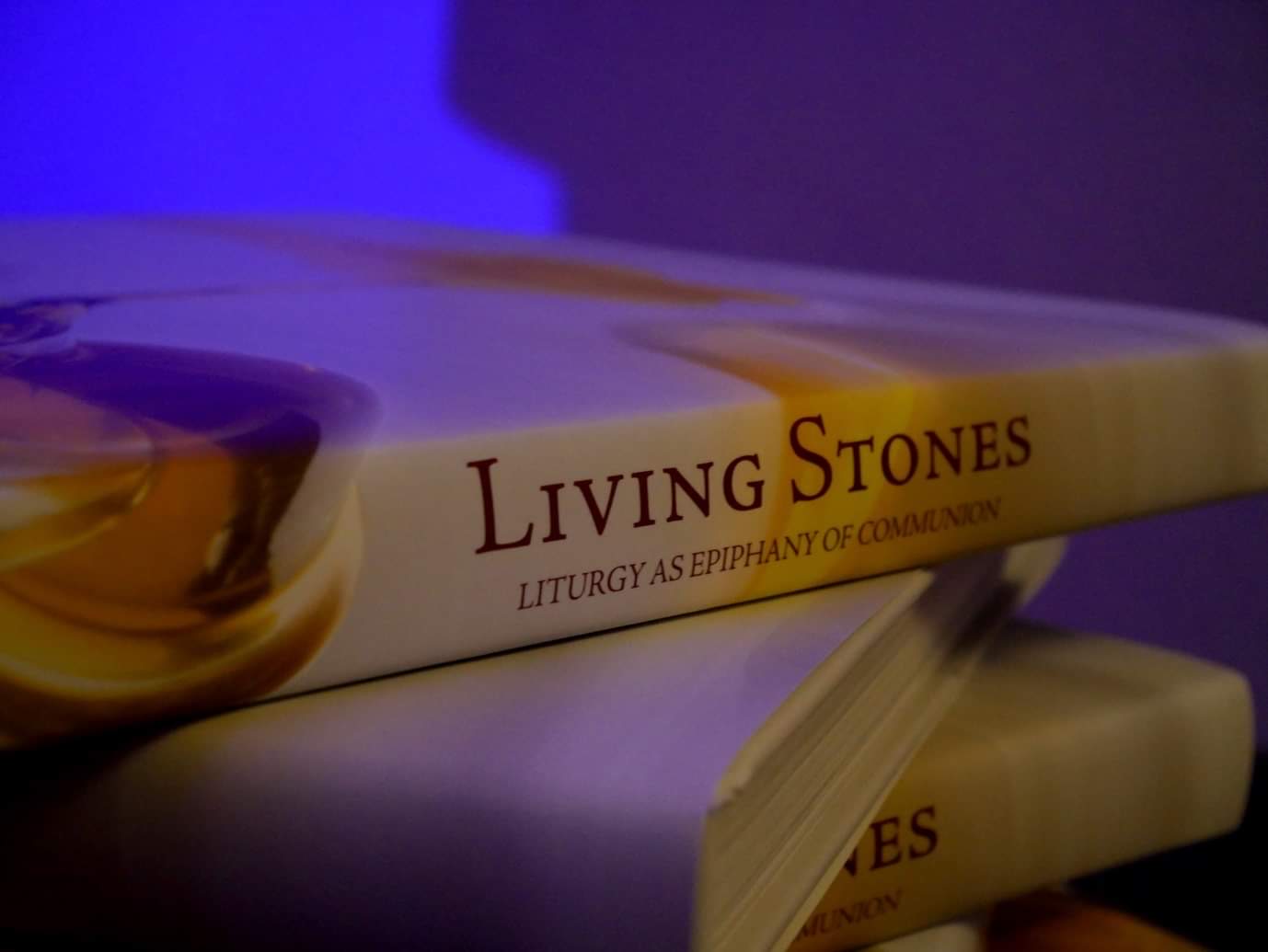
The week starting Oct 5 the community at the Oratory was able to launch the newly published book Living Stones: an epiphany of communion. This book, authored by Fr Martin Cilia with help of many people who contributed in different ways, recounts the liturgical experience of the community of faith that finds in the Oratory’s church its spiritual home.
Due to restrictions caused by Covid-19 the decision was taken to organise multiple events across the week so as to be able to invite small groups of people from the various communities at the Oratory and all those who participate frequently at the Oratory’s liturgical life. The idea behind this book launch was not limited to the presentation of the book’s contents but more importantly to listen to direct witnesses who have either worked on the book or who were directly involved in the process that shaped the liturgical space at the oratory.
Richard England, a well established architect who has previously worked on other liturgical spaces, was able to appreciate the intricate link between architecture and the liturgy. Every physical space has to evolve to adapt to the needs and values of the persons who use that space. Liturgy is no different and the transformation of the liturgical space at the Oratory can be appreciated for the way it manages to reflect the desire to found the life at the Oratory on the celebration of the liturgy, until liturgy becomes the source and summit of all that is done in this place and in our lives as soon as we exit the Oratory to go back to our personal vocations.
The book launch also allowed Nathanael Theuma to share his experience in writing the icons that are found in the church at the Oratory. There is something unique about liturgical art, in that the iconographer when commissioned by the community of faith does not just engage his artistic abilities but participates in prayer and communion with the community of faith so that what his hands portray is the shared faith of the community, to which icons are a window.
Matthew Urpani was another witness engaged in this book launch. Living Stones knows its origins as part of a project that Matthew was doing in fulfilment of a course in design. The initial idea of covering the aesthetic transformation of the liturgical space gradually developed over the course of three years into a book that articulates in photography and writing the liturgical life of the Christian community in the manner that the community at the Oratory has come to live it.
Fr Martin’s concluding reflection at the end of the book launch was his opportunity to describe the vision behind Living Stones. As the leader of the community at the Oratory, Fr Martin had the privileged perspective to describe the spiritual journey of the community that comes together to live the liturgy. Working closely with Fr Giovann during the months spent on partial lockdown due to Covid-19, Fr Martin was able to finish the work on Living Stones and present it to the public.
With the help of Fr Louis Mallia and the team at CPi productions we were able to film these testimonies and present them to the guests that were invited for the book launch. Due to the multiple days over which the book launch was spread many were those from the Oratory’s community who gave out a helping hand during the book launch. There is a sense of belonging towards Living Stones because it reflects the experience of many who are nourished by the liturgical life the book describes. Living Stones feels like our story and journey of faith, and narrating the experience is proving to be a blessing and a good reason to thank the Lord for His faithfulness with us.